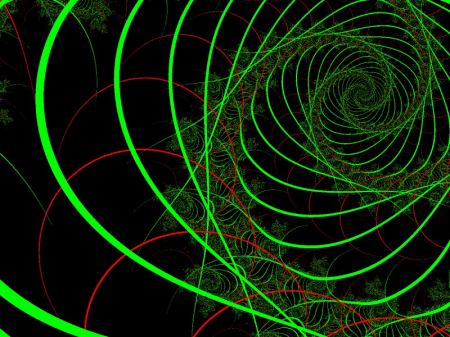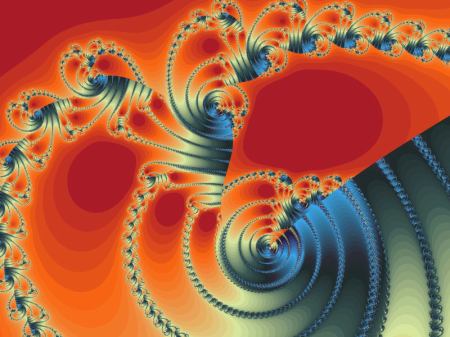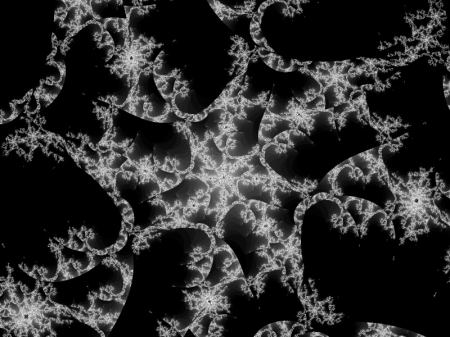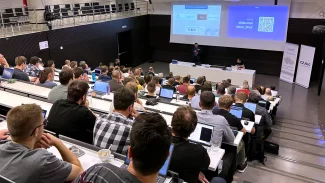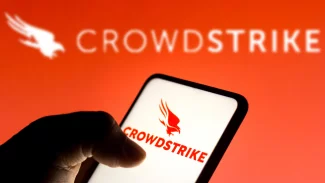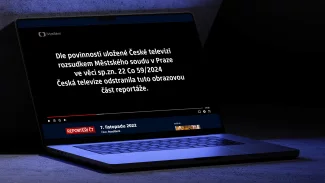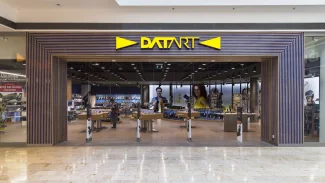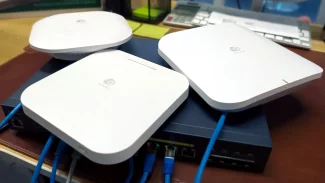Obsah
1. Literatura
2. Odkazy na internetu
3. Obsah poslední části tohoto seriálu
1. Literatura
- Barnsley Michael: „Fractals Everywhere“,
Academic Press Inc., 1988, ISBN 0–12–079062–9 - Barnsley Michael, Devaney R. L., Mandelbrot Benoit B., Peitgenn Heinz-Otto, Saupe Dietmar, Voss Richard: „The Science of Fractal Images“,
Springer-Verlag, New York, 1988 - Barnsley Michael, Hurd Lyman P.: „Fractal Image Compression“,
A. K. Peters, 1993 - Bowman Richard L.: „Fractal Metamorfosis: A Brief Student Tutorial“,
Computer and Graphics, 19, strany 157–164, 1995 - Bulín Jan: „Vykreslování výškových map“,
Ročníkový projekt, VUT Brno, FEI, 1998 - Cahalan R. F. a Joseph J. H.: „Fractal statistics of cloud fields“,
Mon. Wea.Rev. 117, 261–272, 1989 - Cahalan R. F., W. Ridgway, W. J. Wiscombe, T. L. Bell and J. B. Snider: „The albedo of fractal stratocumulus clouds“,
Atmos. Sci. 51, 2434–2455, 1994 - Devaney Robert L.: „A First Course In Chaotic Dynamical Systems“,
Addison-Wesley, Reading, MA, 1992 - Dewdney A. K: „Computer Recreations“,
časopis Scientific American - Douady, A., Hubbard, J.: „Itération des polynomes quadratiques complexes“,
C. R. Acad. Sci., Paris 1982
- Etienne Martineau: „On a Bicomplex Distance Estimation for the Tetrabrot“
June, 2004 - Ewing, J. H., Schober, G.: „The area of the Mandelbrot Set“,
Numer. Math. 1992 - Fischer Yuval (editor): „Fractal Image Compression: Theory and Application“,
Springer-Verlag, New York, 1995 - Gleick James: „Chaos: Making a New Science“,
Viking Press, Penguin, New York, 1987 - Gleick James: „Chaos: Vznik nové vědy“ (český překlad předchozí knihy),
Ando Publishing, Brno, 1996 - Gröller Eduard: „Interactive design of Nonlinear Functions for Iterated Function System“,
Technical University Vienna, 1995 - Hill, F. S. jr.: „Computer Graphics using OpenGL“,
Prentice Hall, 2001 - Hook Brian: „An Introduction to Fixed Point Math“,
Game Design and Review, 2003 - Lauwerier Hans: „Fractals“,
Princeton University Press, 1991 - Makovský Dušan: „Stochastické fraktály“,
Diplomová práce, VUT FIT Brno, 2003
- Mandelbrot Benoit B.: „The Fractal Geometry of Nature“,
W. H. Freeman, New York; San Francisco, 1982, ISBN 0–7167–1186–9 - Mandelbrot Benoit B.: „Fractal Landscapes without creases and with rivers“,
The Science of Fractal Images, ed. Heinz-Otto Peitgen, Dietmar Saupe; Springer-Verlag (1988) pp 243–260 - Peitgen Heinz-Otto, D. Saupe: „The Science of Fractal Images“,
Springer-Velag, 1988 - Peitgen Heinz-Otto, Jurgens Hartmut, Saupe Dietmar: „Fractals For The Classroom“,
Springer-Verlag, New York, 1988 - Peitgen Heinz-Otto, Richter Peter: „The Beauty of Fractals“,
Springer-Verlag, New York, 1986, ISBN 0–387–15851–0 - Peitgen Heinz-Otto, Jurgens Hartmut, Saupe Dietmar: „Chaos and Fractals: New Frontiers of Science“,
Springer-Verlag, New York, 1992 - Perlin K. and Hoffert E. M.: „Hypertexture“,
Computer graphics, Volume 23, Number 3, July 1989, pages 253–262 - Perlin Ken: „An Image Synthesizer“,
Computer Graphics, Volume 19, Number 3, 1985, pages 287–296 - Pickover Clifford: „Computers, Pattern, Chaos and Beauty: Graphics from an Unseen World“,
St. Martin's Press, New York, 1990 - Pickover Clifford: „Chaos in Wonderland“,
ISBN 0–312–10743–9 St. Martin's Press
- Pritchard Joe: „The Chaos Cookbook: A Practical Programming Guide“,
Butterworth-Heinemann, Oxford, 1992, ISBN 0–7506–0304–6 - Prusinkiewicz Przemyslaw and Hanan James: „Lindenmayer Systems, Fractals, and Plants“,
Springer-Verlag, New York, 1989. - Prusinkiewicz Przemyslaw and Lindenmayer Aristid: „The Algorithmic Beauty of Plants“,
Springer-Verlag, NY, 1990. ISBN 0–387–97297–8 - Sharman, J: „How to render landscapes“
- Silverman B. W.: „Density Estimation for Statistics and Data Analysis“,
Chapman and Hall, London, 1986. - Tišnovský Pavel: „Návrh editoru IFS“,
Vysoké učení technické v Brně, Fakulta elektrotechniky a informatiky, 1998 - Tišnovský Pavel: „Interaktivní editor afinních transformací“,
Vysoké učení technické v Brně, Fakulta elektrotechniky a informatiky, 1999 - Tišnovský Pavel: „Výpočet plochy Mandelbrotovy množiny metodou součtu pixelů“,
Elektrorevue, 2001 - Tišnovský Pavel: „Fraktály: dynamické systémy v komplexní rovině“,
Elektrorevue, 2001 - Tumblin Jack, Holly Rushmeier: „Tone Reproduction for Realistic Images“,
IEEE Computer Graphics and Applications, November/December 1993 (Vol. 13, No. 6) pp. 42–48.
- Weber J., Penn J.: „Creation and Rendering of Realistic Trees“,
Proceedings of SIGGRAPH '95, volume 22(4), ACM SIGGRAPH, New York, 1995 - Wegner Timothy, Peterson Mark: „Fractal Creations, First Edition“,
The Waite Group Press, 1991 - Wegner Timothy, Tyler Bert: „Fractal Creations, Second Edition“,
The Waite Group Press, 1993 - Wegner Timothy, Tyler Bert, Peterson Mark, Branderhorst Pierer: „Fractals for Windows“,
The Waite Group Press, 1992 - Yates Randy: „Fixed-Point Arithmetic: An Introduction“
- Žára J., Beneš B., Felkel P.: „Moderní počítačová grafika“,
Computer Press, Praha, 1998, ISBN 80–7226–049–9 - Žára J., Limpouch A., Beneš B., Werner T.: „Počítačová grafika – principy a algoritmy“,
Grada, 1992
2. Odkazy na Internetu
- Bourke Paul: "Fractal Landscapes (Modelling fake planets),
http://local.wasp.uwa.edu.au/~pbourke/modelling_rendering/planets/
The following describes a method of creating realistic looking planetary models. The technique has been known for some time and is both an elegant and non-intuitive way of creating such fractal surfaces. The exact approach chosen here was to enable the models to be used in a variety of rendering packages, as such it is based upon facet approximations to a sphere. The same approach can readily be modified to deal with other data structures. - Bourke Paul: „Terrain morphing“,
http://local.wasp.uwa.edu.au/~pbourke/modelling_rendering/tmorph/
Morphing is a popular technique in the computer graphics industry extensively used in Michael Jackson videos but also used in countless movies and television ads. The technique was first used in the early 1980's, one of the first movies that used morphing was „Indiana Jones and the last Crusade“. Morphing is a very different technique to fading, in that case the colour of each pixel in an intermediate frame is a linear interpolation between the colour of the corresponding pixel in the start and stop frame. - Cahalan Robert F.: Fractal Clouds Reference by ,
http://climate.gsfc.nasa.gov/~cahalan/FractalClouds/FractalClouds.html
Information on the fantastic variety of cloud forms and structures, and their implications for climate. This is currently at an early stage of development, so what you see is just the „bare bones“. Let me know if you have suggestions for items to add. - Cygnus software: „Fractal eXtreme (fractal generator for Windows)“,
http://www.cygnus-software.com
We think that if you give Fractal eXtreme a try, you will soon decide that Fractal eXtreme's unique combination of speed, power, and intuitive interface make it your best choice for exploring the wonders of fractals. - Devaney Bob: „Dynamical systems and Iterated Function Systems“,
http://math.bu.edu/people/bob/
Bob Devaney's Home Page - Giffin Noel a kol.:
„The Spanky Fractal Database“,
http://spanky.triumf.ca/
This is a collection of fractals and fractal related material for free distribution on the net. Most of the software was gathered from various ftp sites on the internet and it is generally freeware or shareware. Please abide by the guidelines set down in the individual packages. I would also like to make a disclaimer here. This page points to an enormous amount of information and no single person has the time to thoroughly check it all. I have tested software when I had the resources, and read through papers when I had the time, but other than certifying that it is related to fractals I can't assume any other responsibility. Thanks to everyone who has contacted me, pointing out new and interesting fractal material. I try to respond to everyone but sometimes things just get too hectic or I get too disorganized. I also appreciate all your comments and criticisms, but please understand that it is impossible for me to impliment everything or reply to all. - Gintz Terry W.: „Zplot (fractal generator)“,
http://www.mysticfractal.com/FractalZplot.html
Fractal Zplot is an interactive program for generating fractal images. Originally named Zplot, this program has been in continuous development since 1989. Fractal Zplot currently supports the Mandelbrot set, Julia sets, Newton's method, and Phoenix curves, with millions of mapping variations. 3D fractal types include quaternion, hypercomplex, orbital fractals and lsystems, in addition to the original height field and landscape types. - Henstridge James: „What is an IFS fractal“,
http://www.daa.com.au/~james/fractals/ifs/intro.html
IFS stands for Iterated Function System. Fractals of this type are created by applying one of a number of functions, chosen randomly from the rules set up for the IFS, repeatedly to an intitial point, and graphing each new point. For more information on the functions used, see the page on IFS formulas. With IFS fractals, it can be seen that the starting point does not effect the shape of the fractal too much. This means that a particular fractal can be defined by the rules used to find the next point, and the probabilities that an individual function will be chosen. This is the model used by my IFS fractal generator. - Hubička Jan: „Stránky programu XaoS“,
http://xaos.sourceforge.net/english.php
Welcome to the redesigned web portal of XaoS. Here we offer up-to-date information about the XaoS project, the development issues and others. - Hubička Jan: „Starší (a IMHO hezčí) verze stránek programu XaoS“,
http://xaos.sourceforge.net/black/index.php
XaoS is a fast portable real-time interactive fractal zoomer. It displays the Mandelbrot set (among other escape time fractals) and allows you zoom smoothly into the fractal. Various coloring modes are provided for both the points inside and outside the selected set. In addition, switching between Julia and Mandelbrot fractal types and on-the-fly plane switching is provided. The first version was a minimal X Window Mandelbrot viewer by Thomas later modified by Jan to support high frame-rate zooming. Other additions were later made by both Thomas and Jan including autopilot (for those of you without drivers licenses), palette changing, GIF saving, and fractal inversion.
- Chardonnet David: „IFS Fractals Digital Encyclopedy“,
http://www.chez.com/fractals/galeries/gb_index.html - Jones Damien M. a kol.:„Fractalus“,
http://www.fractalus.com
fractalus.com exists to showcase fractal art, provide information about fractals, and promote fractals in general. We (the artists who build and maintain this site) want to show you our very best; we create this art because we love to do it. We're happy to share this with you, but we would appreciate it if you would respect our wishes regarding image re-use and copyrights. - Jorgensen Eric: Generating Terrain,
http://www.geocities.com/Area51/6902/terrain.html
There are two general approaches to generating synthetic terrain, either for use in a game or for rendering into pretty images (or both). One is to use actually measured data of real portions of the earth (or other planets), and another is to synthesize your own data. Either way you end up (typically) with an array of elevations, known as a heightfield (or displacement map, or depth map). - Keenan Crane: „Ray Tracing Quaternion Julia Sets on the GPU“,
http://www.devmaster.net/forums/showthread.php?t=4448
This project takes advantage of the floating point power of recent GPUs to quickly visualize quaternion Julia sets. Pictures above were ray traced in less than a second on a pair of GeForce 7800 GTX graphics cards running in SLI (top picture originally rendered at 1280×1024 and downsampled 50% to reduce aliasing). - Kolka Milan: „Spojování želv v jazyce založeném na L-systémech“,
http://www.elektrorevue.cz/clanky/01010/index.html
Článek představuje programovací jazyk Fraktálovač, který je určen ke generování fraktálů. Jazyk je založen na Lindenmayerových systémech (L-systémech). Zejména je zde ukázán princip spojování želv, který rozšiřuje možnosti klasických L-systémů. - Lartigue Ghislain: „Hydrodynamical Instabilities: The Iterative Function System“,
http://www.enseeiht.fr/hmf/travaux/CD9900/travaux/optmfn/hi/00pa/mfn11/pa01.htm
The aim of this hands-on was to study a dynamical system. I have choosen to deal with a particular class of these systems which are the Iterative Function System (IFS). These systems are not really what one could call a „pure“ dynamical system. Actually, all the systems we have studied so far can be written X'=F(X,t), that is to say that the derivative of a given set of variables X=(x1,…,xn) can be expressed as a function of this set X and of the time (for the non-autonomous systems). Thus, the whole evolution of the system is perfectly deterministic and actually, is totally determined by the initial condition X(0). However, it is well known that in many cases, the evolution of a system can become chaotic and then, the sensibility to the initial conditions can give the impression that the system follows a random trajectory. But one should still remember that this is just an illusion which is the consequence of our finite precision knowing of the initial condition. - Martz Paul: „Generating Random Fractal Terrain“,
http://www.gameprogrammer.com/fractal.html
Ten years ago, I stumbled across the 1986 SIGGRAPH Proceedings and was awestruck by one paper in particular, entitled The Definition and Rendering of Terrain Maps by Gavin S. P. Miller 1 . It described a handful of algorithms for generating fractal terrain, and the authors also introduce a new method which they considered to be an improvement. Initially I was impressed that these algorithms (even the algorithms considered „flawed“ by the authors) could create such incredible landscape images! Then, upon reading the paper, I was floored by the simplicity of these algorithms. - Musgrave Ken: Building Fractal Planets,
http://www.wizardnet.com/musgrave/article.html
What does it take to build a world? This is the central question of my research. My overarching goal is the creation from first algorithmic principles of an entire planet, well-defined everywhere and at all scales, with visual complexity, appearance, and beauty similar to Earth, and to bring that model to real-time performance. Needless to say, this undertaking subsumes a large number of interesting and challenging elements. These include developing our capabilities in visual realism, models of natural phenomena, computational efficiency in such models, and algorithmic art. I am confident that there are enough challenges involved to keep me busy for the rest of my days. - Pulcini Giovambattista, Verrando, Meloni Rossi: „IFS: Fractal Image Compression“,
http://mathforum.org/library/view/6165.html
Download IFS Application Framework, a freeware educational program for fractal image coding. Note: It needs 486DX2/66, 8MB RAM, Windows 3.1 with a 11MB swapfile and a 32000 SVGA driver (at least). Download IFSDOC, an introduction to IFS and IFSAF (in Postscript format). A more detailed description of IFSAF is also available. - Pulcini Giovambattista: „Fractal Image Compression Software (for Windows)“,
http://www.verrando.com/pulcini/gp-ifs1.html
IFSAF: IFS Application Framework is a software running under Windows 3.x for fractal image encoding. It has some bugs, makes no control on what you are doing, so it crashes frequently, is not a well-behaved window application: it monopolizes the CPU until the enc/dec is over, but shows graphically each step of the computation, so may be a valuable choise for the beginners in this field.Besides, it is a powerful framework, for testing several different algorithms, andoptions.
- Scott Draves: „The Fractal Flame Algorithm“,
http://flam3.com/flame_draves.pdf, May 18, 2005 - Slijkerman Frederik: „Ultra Fractal (fractal generator for Windows)“,
http://www.ultrafractal.com
Ultra Fractal is the best tool to create fractal artwork and fractal animations. Whether you are a graphics designer, a professional fractal artist, a video producer, or a complete beginner, Ultra Fractal 4 makes it easy to create beautiful fractal pictures, animated textures, and moving fractal backgrounds. - Taylor Michael Charles: „Frequently Asked Questions about Fractals“,
http://spanky.triumf.ca/pub/fractals/docs/SCI_FRACTALS.FAQ
This FAQ is posted monthly to sci.fractals, a Usenet newsgroup about fractals; mathematics and software. This document is aimed at being a reference about fractals, including answers to commonly asked questions, archive listings of fractal software, images, and papers that can be accessed via the Internet using FTP, gopher, or World-Wide-Web (WWW), and a bibliography for further readings. - Thornton Sterling: „XenoDream (Interactive IFS Editor)“,
http://xenodream.com
XenoDream is a 3-D graphics program that combines standard shapes with 3-D IFS fractal methods for interactive modeling with a difference. Browse through our galleries for some examples, and the XenoDream pages to learn more. - Tyler Bert, Wegner Tim a kol.:
„Fractint (fractal generator for DOS, Windows and Unix)“,
http://www.fractint.org
Fractint is a freeware fractal generator created for IBMPC's and compatible computers to run under DOS and ported to Linux. This page is for developers who wish to keep up with the latest source changes and users who would like to try the current developer's version. This page is under development by a one-finger typist entering html in a text editor, so it may not get much fancier than this for a while. - „Institute for Nonlinear Science“,
http://inls.ucsd.edu/
The Institute for Nonlinear Science (INLS) is an Organized Research Unit at the University of California San Diego (UCSD). This is an academic research unit of the University of California dedicated to interdisciplinary research and training of graduate students. Students at UCSD are admitted to disciplinary programs in academic departments, but may pursue their dissertation research within the laboratories of INLS. (UCSD).
- Wikipedia: Aleksandr Lyapunov,
http://en.wikipedia.org/wiki/Aleksandr_Lyapunov - Wikipedia: „Assembly language“,
http://en.wikipedia.org/wiki/Assembly_language - Wikipedia: „Fixed-point arithmetic“,
http://en.wikipedia.org/wiki/Fixed-point_arithmetic - Wikipedia: „Floating point“,
http://en.wikipedia.org/wiki/Floating_point - Wikipedia: „Fractal Landscape“,
http://en.wikipedia.org/wiki/Fractal_landscape - Wikipedia: „IEEE floating-point standard“,
http://en.wikipedia.org/wiki/IEEE_Floating_Point_Standard - Wikipedia: „List of assemblers“,
http://en.wikipedia.org/wiki/List_of_assemblers - Wikipedia: Lyapunov exponent,
http://en.wikipedia.org/wiki/Lyapunov_exponent - Wikipedia: Lyapunov fractal,
http://en.wikipedia.org/wiki/Lyapunov_fractal - Wikipedia: „Penrose Tiling“,
http://en.wikipedia.org/wiki/Penrose_tiling - Wikipedia: „Plasma effect“,
http://en.wikipedia.org/wiki/Plasma_effect - Wikipedia: „Rescue on Fractalus“,
http://en.wikipedia.org/wiki/Rescue_On_Fractalus - Wikipedia: „Roger Penrose“,
http://en.wikipedia.org/wiki/Roger_Penrose - Wikipedia: „TASM (Turbo Assembler)“,
http://en.wikipedia.org/wiki/TASM
- Etienne Martineau: 3dfractals.com:
http://3dfractals.com - Stránky o algoritmu Fractal Flame:
http://flam3.com/ - Download aplikací pro vytváření IFS pomocí Fractal Flame:
http://flam3.com/index.cgi?&menu=download - Stránka programu Apophysis:
http://www.apophysis.org/ - Mandelbrot Explorer (internetový prohlížeč Mandelbrotovy množiny):
http://www.softlab.ece.ntua.gr/miscellaneous/mandel/mandel.html - The Mandelbrot Set (Javovský applet):
http://www.mindspring.com/~chroma/mandelbrot.html - Sustainability through the Dynamics of Strategic Dilemmas (článek):
http://laetusinpraesens.org/docs00s/cardrep.php - Interior Sketchbook Diary (článek):
http://www.linas.org/art-gallery/mandel/mandel.html - Stránka věnovaná „počítání“ v Mandelbrotově množině:
http://math.bu.edu/DYSYS/FRACGEOM2/FRACGEOM2.html - Terragen – photorealistic scenery rendering software,
http://www.planetside.co.uk/terragen/ - MDTerrain – a Terrain Generator (psaný v C++ a OpenGL),
http://www.embege.com/fractals/mdterrain/ - The Center for the Computation and Visualization of Geometric Structures (obrázky fraktálních oblaků),
http://www.geom.umn.edu/graphics/pix/General_Interest/Fractals/ - Gforge and Landscapes (John Beale),
http://www.best.com/~beale/ - Ter Screenshots (program pro Linux),
http://www.penguintown.net/Graphics/ter/ - Les St Clair: „About Anti-aliasing and Fractals“
http://www.homeusers.prestel.co.uk/crosstrees/aa.htm - Damien Jones: „Fractalus – Anti-aliasing and fractals“
http://www.fractalus.com/misc/antialias.htm - The Lyapunov exponent:
http://monet.unibas.ch/~elmer/pendulum/lyapexp.htm - Lyapunov Fractals:
http://spanky.triumf.ca/www/fractint/lyapunov_type.html - Lyapunov Space:
http://hypertextbook.com/chaos/44.shtml - Markus-Lyapunov Fractals:
http://perso.orange.fr/charles.vassallo/en/lyap_art/lyapdoc.html - Logistic function:
http://en.wikipedia.org/wiki/Logistic_function - Logistic map:
http://en.wikipedia.org/wiki/Logistic_map - The Logistic Map:
http://www.geocities.com/CapeCanaveral/Hangar/7959/logisticmap.html - List of chaotic maps:
http://en.wikipedia.org/wiki/List_of_chaotic_maps - Circle patterns:
http://www.eddaardvark.co.uk/python_patterns/circle_pattern.html - Perlin Noise and Turbulence:
http://local.wasp.uwa.edu.au/~pbourke/texture_colour/perlin/ - Perlin Noise and Turbulence:
http://local.wasp.uwa.edu.au/~pbourke/texture_colour/perlin/
3. Obsah poslední části tohoto seriálu
V poslední části seriálu o fraktálech budou vypsány obsahy všech předchozích částí. Kromě toho si ukážeme poslední sérii doposud nepublikovaných obrázků.


